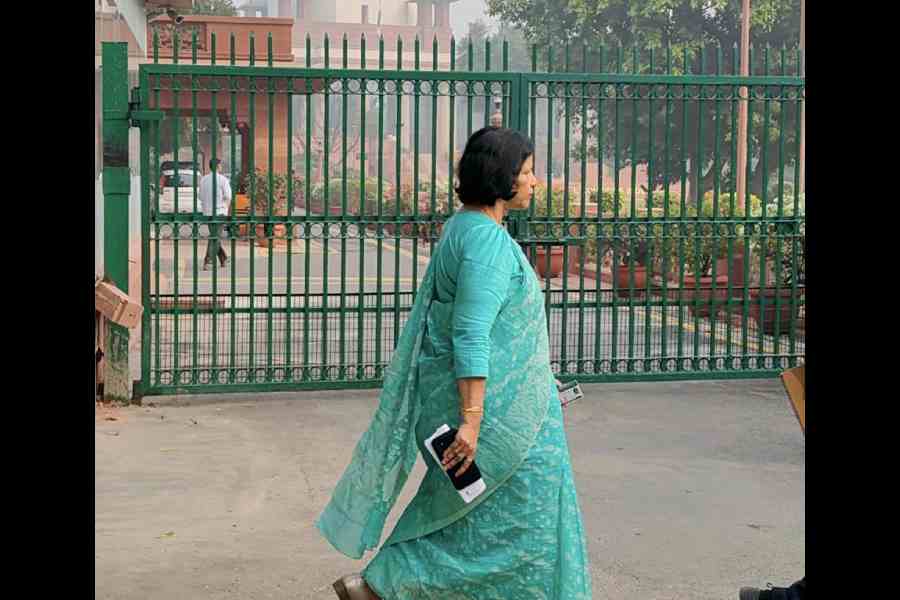The Supreme Court on Friday ruled by 4:3 majority that a new bench would decide whether Aligarh Muslim University qualifies as a minority institution, while overruling a 1967 judgment that said it cannot be considered so since it was established by a central law.
The seven-judge constitution bench added that the new three-judge bench would decide on AMU’s minority status — a question that has vexed courts and governments for over a half-century — on the basis of principles laid down in Friday’s judgment.
These principles emphasise the relevance of whether members of a minority community had founded the institution and with the purpose of helping their community.
Members of the AMU fraternity welcomed the judgment saying it had vindicated the university’s stand that the matter should be decided on the basis of who had envisaged the institution and worked towards its establishment.
Chief Justice of India D.Y. Chandrachud authored the majority verdict on behalf of himself and Justices Sanjiv Khanna, J.B. Pardiwala and Manoj Misra, while the dissenting judges — Justices Surya Kant, Dipankar Datta and Satish Chandra Sharma — authored separate judgments.
The three dissenting judges upheld the 1967 judgment, delivered by a five-judge constitution bench. They also questioned the judicial propriety of a previous two-judge apex court bench’s acts of questioning — in 1981 — the 1967 verdict and referring the matter to a seven-judge bench.
The Muhammadan Anglo-Oriental College, established in Aligarh by members of the Muslim community, was by an act of the imperial legislature converted into the Aligarh Muslim University in 1920.
In 1967, a five-judge bench ruled that having been established by a central act, AMU was a central university and not a minority institution. In 1981, a two-judge bench questioned the correctness of the 1967 judgment and referred it to a seven-judge bench, which was never formed.
Also in 1981, the then Indira Gandhi government passed an act in Parliament bestowing minority status on the university. But in 2005, a single-judge bench of Allahabad High Court struck down the 1981 act, and a division bench upheld the ruling in 2006.
AMU and others, including the then Congress-led UPA government, challenged the high court judgment, which a three-judge apex court bench referred to the present seven-judge bench in 2019. By then, the central government — now helmed by the BJP — had switched sides to argue that AMU was not a minority institution.
One of the arguments against Aligarh Muslim University’s minority status was that the institution was established in British India before the birth of the Constitution that recognises some communities as minorities and gives them the right to form their own institutions with certain privileges.
Writing the main judgment on his last working day, Chief Justice Chandrachud said: “We reject the argument that the test of whether an educational institution is a minority institution must be examined based on whether the community or the group which had established the institution was a minority at the time of its establishment in pre-independent India.”
He added: “The protection under clause (1) of Article 30 (right of minorities to run and manage their own educational institutions) cannot be denied to institutions established before the commencement of the Constitution for the reason that at the time of establishment in pre-independent India, the founders were not aware that they would receive protection of Article 30(1).”
Some of the conclusions of the majority judges:
◉ The reference to a seven-judge bench by a two-judge bench in 1981 was valid.
n Religious or linguistic minorities must prove that they established the educational institution for the community for it to be considered a minority educational institution for the purposes of Article 30(1).
◉ The right guaranteed by Article 30(1) applies also to universities established before the commencement of the Constitution.
◉ The incorporation of the university would not by itself lead to a surrender of its minority character. The circumstances surrounding the conversion of a teaching college to a teaching university must be viewed to identify whether the minority character of the institution was surrendered upon the conversion.
◉ The court may, on a holistic reading of the statutes of the administrative set-up of the educational institution, decide whether its minority character or the purpose of its establishment was relinquished upon incorporation.
The apex court said the following factors must be considered to determine whether a minority had “established” an educational institution:
◉ The idea to establish the educational institution must have come from a person or group belonging to the minority community.
◉ The institution must have been established predominantly for the benefit of the minority community.
◉ The steps for the idea’s implementation must have been taken by member(s) of the minority community.
◉ The administrative set-up of the institution must elucidate and affirm (i) the minority character of the educational institution; and (ii) that it was established to protect and promote the interests of the minority community.
Minority status would allow Aligarh Muslim University to reserve a substantial proportion of its seats for members of the community and give it a significant say in selecting its vice-chancellor.










